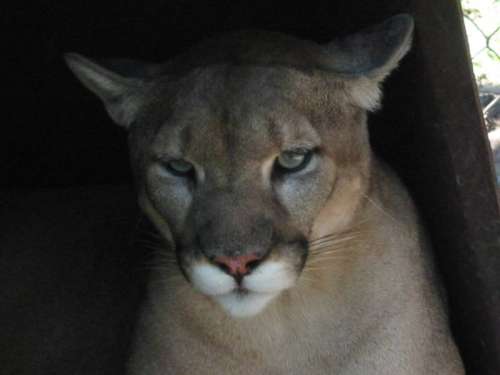 |
Cougar
Puma Concolor
Kingdom: | Animalia | Phylum: | Cordata | Class: | Mammalia | Order: | Carnivora | Family: | Felidae | Genus: | Puma | Species: | Concolor |
|
Description
The panther has a fairly uniform, tawney brown coat with a lighter under-belly. The tips of their ears are somewhat darker. They are approximately the size of a great dane dog.
Panthers are also known regionally by the names mountain lion, puma, and panther.
Click
Here to See Cougar Pictures
Average Statistics
Length | 7 ft. |  | Weight | 100-200 lbs. | Geographic Range | The Americas | Territory Size | 10 square miles for males. 2 square miles for females. |
DietPanthers eat only meat. About 90 % of their diet is feral hog, white-tailed deer, raccoon, and armadillo. Occasionally they consume rabbits, rats, and birds, and on rare occasion alligators. adults will generally eat the equivalent of 1 deer per week. OffspringPanthers will typically have 1 to 4 kits at a time after a gestation period of 95 days. At birth the cubs are blind and confined to the den. Within 2 weeks the kits have opened their eyes and begin hunting with their mothers within 2 months. Panther kits live with their mothers for up to two years as they learn how to hunt. SoundsCougars are usually quiet, but under some circumstances they do communicate through vocalizations. Sounds they make have been described as chirps, peeps, whistles, purrs, moans, screams, growls, and hisses. When frightened, kittens emit a series of short, high-pitched peeps. Kittens and mothers keep track of each other with whistles. Females signal their readiness to mate by yowling or caterwauling. Relationship with HumansUrban sprawl and poaching have caused some species of panther, specifically the Florida Panther, to approach extinction. |

